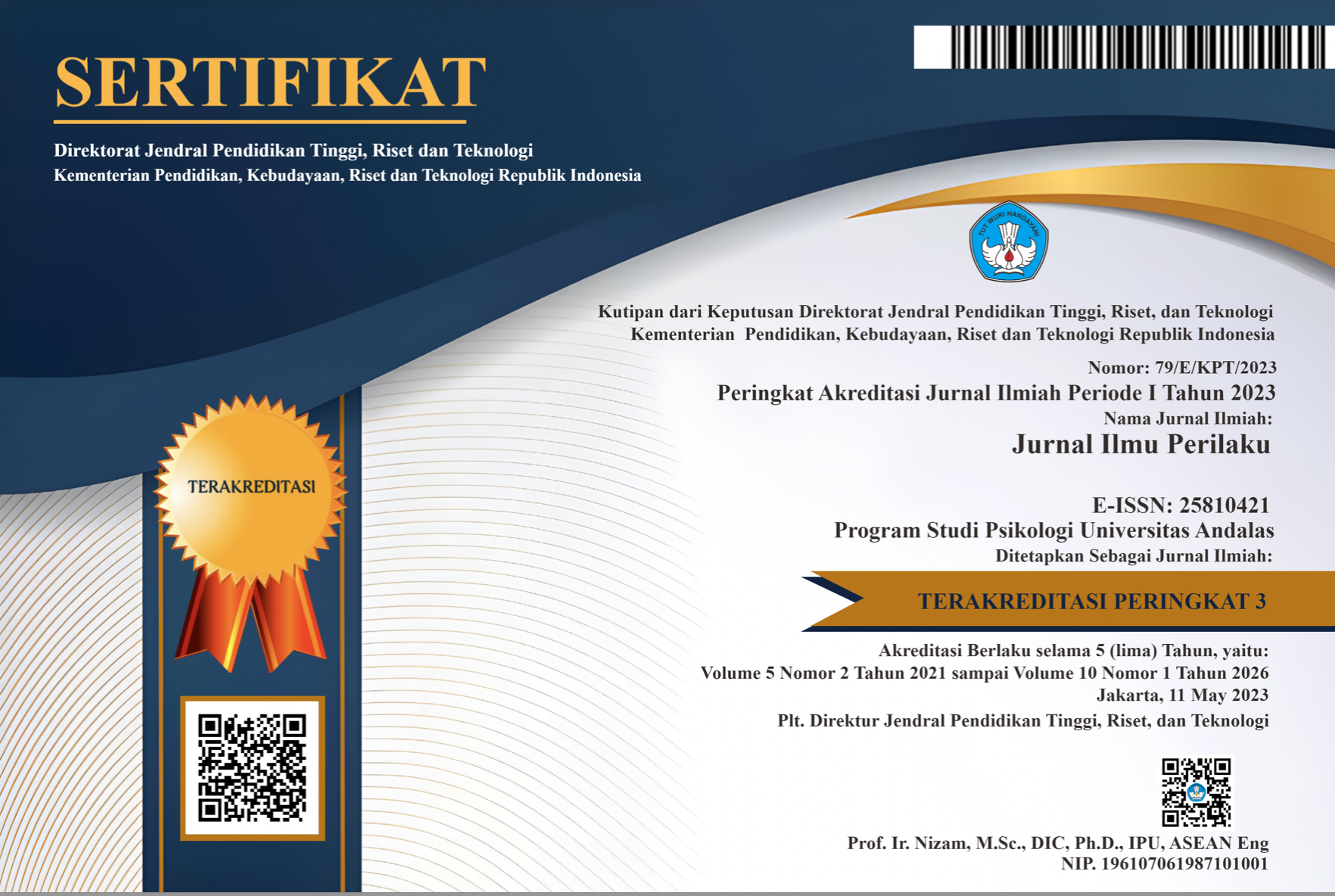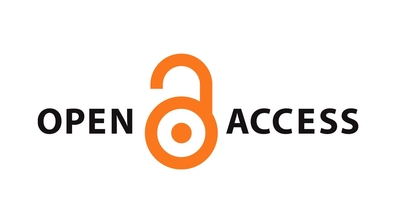Peran Kepercayaan Sosial dan Sentralitas Jaringan Terhadap Persepsi Resiko Bencana Alam
Abstract
This research is aimed to understand the risk perception of Merapi disaster in hazardous community, by viewing the contribution of social network centrality and social trust towards risk perception of natural disaster. Hypotheses in this research are; social network centrality (degree, closeness, betweenness, eigenvector centrality) and social trust which all together are able to predict Merapi’s disaster risk perception. This research was conducted at Dusun Gondoarum, Desa Wonokerto, Kecamatan Turi, Kabupaten Sleman, DIY, with 83 total respondents, research data revealed by psychological scale and name generator. Result of this research prove that social trust, centrality degree, centrality betweeness, centrality closeness, and centrality eigenvector all together are able to predict merapi’s disaster risk perception, with 30.9 % coefficient determination value (R2). Which mean that the research hypothesis is convicted. Two predictor which gave a big role towards natural disaster risk perception are social trust and eigenvector centrality with coefficient determination at 23.6%.
Downloads
References
Bateman, I.J., Georgiou, S., Day, R.J., & Langford, I.H. (2000). A cognitive social psychological model for predicting individual risk perceptions and preferences.
Cserge Working Paper. Diunduh dari http://www.cserge.ac.uk/sites/default/files/gec_2000_09.pdf.
Borgatti, S.P. (2005). Centrality and Network Flow. Social Network, 27, 55-71.
Borgatti, S.P & Foster, P.C. (2003). The Network Paradigm in Organizational Research: A Review and Typology. Journal of Management, 29(6), 991–101.
Borgatti, S.P., Everett, M.G. & Freeman, L.C. (2002). Ucinet 6 for Windows: Software for Social Network Analysis. Cambridge: Analytic Technologies.
Burt, R.S. (1987). Social contagion and innovation: Cohesion versus structural equivalence. American Journal of Sociology, 92, 1287–1335.
Carlino, S., Somma, R., & Mayberry, G.C. (2008). Volcanic risk perception of young people in the urban areas of Vesuvius: Comparisons with other volcanic areas and implications for emergency management. Journal of Volcanology and Geothermal Research, 172: 229–243.
Delhey, J., & Newton, K. (2004). Predicting Cross-National Levels of Social Trust: Global Pattern or Nordic Exceptionalism? European Sociological Review, 21(4): 311-327.
Field, J. (2005). Modal Sosial. Medan: Bina Media Perintis.
Freeman, L.C. (1979). Centrality in Social Network, Conceptual Clarification. Social Networks, 1, 215-239.
Friedkin, N.E. (1991). Theoritical Foundation for Centrality Measures. AJS, 96(6), 1478-1504.
Granovetter, M. (1983). The Strength of Weak Ties: A Network Theory Revisited. Sociological Theory, 1, 201-233.
Gulliver, P & Begg, D. (2007). Personality factors as predictors of persistent risky driving behavior and crash involvement among young adults. Inj Prev, 13(6), 376–381.
Jatman, D. 2000. Psikologi Jawa. Yogyakarta: Bentang Budaya.
Kuz, A & Giandini, R. (2012). Social Network Analysis: a practical measurement and evaluation of Trust in a classroom environment. Judgment and Decision Making, 7, 269-283.
Luo, J.D. (2005). Particularistic Trust and General Trust: A Network Analysis in Chinese Organizations. Management and Organization Review, 1(3), 437–458.
McCarty, C., Eric, C. J., Albert, J.F, Arthur, D. M., Graham, A T., & Linda, M.W. (2013). Cross-Cultural and Site-Based Influences on Demographic, Well-being, and Social Network Predictors of Risk Perception in Hazard and Disaster Settings in Ecuador and Mexico. Human Nature, 24, 5–32.
Mutter, B. A. (2009). Risk Perception, Social Networks, And Media Frames Associated With Human-Cormorant Interactions In The Great Lakes, (Tesis tidak diterbitkan). Michigan State University.
Paton, D. (2007). Preparing for natural hazards: the role of community trust. Disaster Prevention and Management, 16(3), 370-379.
Poortinga, W., Pidgeon, N., & Lorenzoni, I. (2005). Public Perceptions of Nuclear Power, Climate Change and Energy Options in Britain. Understanding Risk Working Paper, 06-02. Diunduh dari http://psych.cf.ac.uk/understandingrisk/docs/survey_2005.pdf..
Reed, M., Prell, C., & Hubacek, K. (2009). Stakeholder Analysis and Social Network Analysis in Natural Resource Management. Society and Natural Resources, 22, 501–518.
Rothstein, B & Eek, D. (2006). Political Corruption and Social Trust. Rationality & Society, 21(1), 81-112.
Rundmo, T ., Moen, B.E. & Sjöberg, L. (2004). Explaining risk perception. An evaluation of the psychometric paradigm in risk perception research. Norwegian University of Science and Technology: Department of Psychology.
Siegrist, M. & Cvetkovich, S. (2000). Perception if hazards: The role of social trust and knowledge. Risk Analysis, 20(7), 713-719.
Susetyo,B. D. P., Widiyatmadi, H. M. E. & Sudiantara, Y. (2014). Konsep Self Dan Penghayatan Self Orang Jawa. Psikodimensia, 13(1), 47 – 59.
Sjöberg, L. (1999). Risk Perception in Western Europe. Ambio, 28(6), 543-549.
Sjöberg, L. (2003). Risk perception is not what it seems: The psychometric paradigm revisited. Valdor, Values in Decisions on Risk, 35 (4), 14-29.
Sjoberg, L. (2007). Emotions and Risk Perception. Risk Management, 9(4), 223-237.
Slovic, P. (1992). Perception of risk: reflections on the psychometric paradigm. In S. Krimsky and D. Golding (Eds.). Social theories of risk. Westport, CT: Praeger.
Slovic, P., McDaniels, T., & Axelrod, L.J. (1999). Perceptions of ecological risk from natural hazards. Journal of Risk Research, 2(1), 31–53.
Stead, M.S., Polunin, N.V.V., & Turner, R. (2014). Social networks and fishers’ behavior: exploring the links between information flow and fishing success in the Northumberland lobster fishery. Ecology and Society, 19(2), 38-49.
Triyoga, L. S. (2010). Merapi dan Orang Jawa: Persepsi dan Kepercayaannya. Jakarta: Grasindo.
Valente, T.W. & Costenbader, E. (2003). The stability of centrality measures when networks are sampled. Social Networks, 25, 283–307.
Wasserman, S.S. & Faust, K. (1994). Social Network Analysis: Methods and Applications. New York: Cambridge University Press.
Wogalter, M.S., DeJoy, D.M., & Laughery, K.R., (1999). Warnings and Risk Communication. Philadelphia: Taylor and Francis.
Yamagishi, M & Yamagishi, T. (1994). Trust and Commitment in the United States and Japan. Motivation and Emotion, 18(2), 129-167.
Yamagishi, T. (1989). Major Theoritical Approach in Social Dilemmas Research. Japan Psychological Review (Cook, K.S, Trans.), 32(3), 262-294.
The non-commercial use of the article is governed by the Creative Commons Attribution license as currently displayed on Creative Commons Attribution-NonCommercial-ShareAlike 4.0 International License.
JIP's spirit is to disseminate articles published are as free as possible. Under the Creative Commons license, JIP permits users to copy, distribute, display, and perform the work for non-commercial purposes only. Users will also need to attribute authors and JIP on distributing works in the journal.
Please find the rights and licenses in Jurnal Ilmu Perilaku (JIP).
- License
The non-commercial use of the article will be governed by the Creative Commons Attribution license as currently displayed on Creative Commons Attribution-NonCommercial-ShareAlike 4.0 International License.
- Author’s Warranties
The author warrants that the article is original, written by stated author(s), has not been published before, contains no unlawful statements, does not infringe the rights of others, is subject to copyright that is vested exclusively in the author and free of any third party rights, and that any necessary written permissions to quote from other sources have been obtained by the author(s).
- User Rights
JIP's spirit is to disseminate articles published are as free as possible. Under the Creative Commons license, JIP permits users to copy, distribute, display, and perform the work for non-commercial purposes only. Users will also need to attribute authors and JIP on distributing works in the journal.
- Rights of Authors
Authors retain the following rights:
- Copyright, and other proprietary rights relating to the article, such as patent rights,
- The right to use the substance of the article in future own works, including lectures and books,
- The right to reproduce the article for own purposes, provided the copies are not offered for sale,
- The right to self-archive the article.
- Co-Authorship
If the article was jointly prepared by other authors, the signatory of this form warrants that he/she has been authorized by all co-authors to sign this agreement on their behalf, and agrees to inform his/her co-authors of the terms of this agreement.
- Termination
This agreement can be terminated by the author or JIP upon two months’ notice where the other party has materially breached this agreement and failed to remedy such breach within a month of being given the terminating party’s notice requesting such breach to be remedied. No breach or violation of this agreement will cause this agreement or any license granted in it to terminate automatically or affect the definition of JIP.
- Royalties
This agreement entitles the author to no royalties or other fees. To such extent as legally permissible, the author waives his or her right to collect royalties relative to the article in respect of any use of the article by JIP or its sublicensee.
- Miscellaneous
JIP will publish the article (or have it published) in the journal if the article’s editorial process is successfully completed and JIP or its sublicensee has become obligated to have the article published. JIP may conform the article to a style of punctuation, spelling, capitalization, referencing and usage that it deems appropriate. The author acknowledges that the article may be published so that it will be publicly accessible and such access will be free of charge for the readers.










